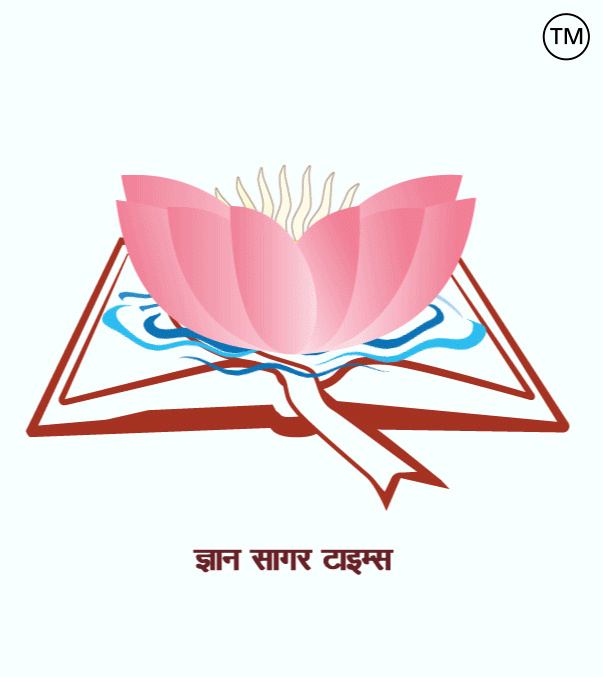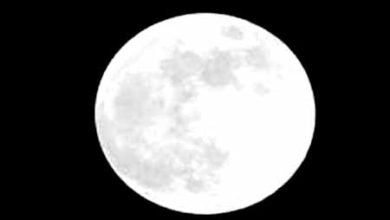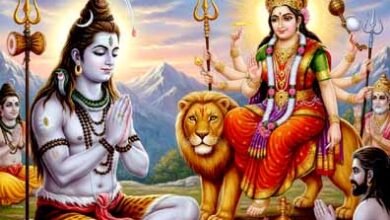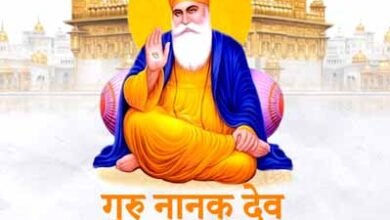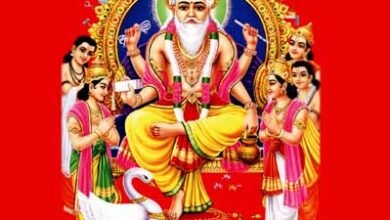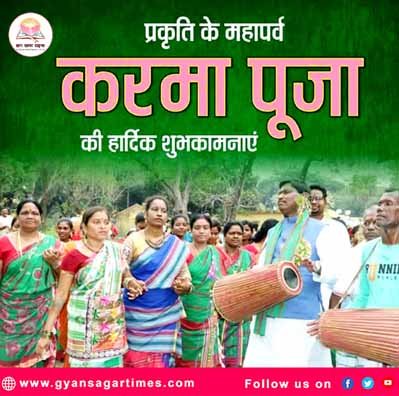
करमा पूजा…
पिछले दिनों हम लोगों ने भाई-बहन का पर्व राखी, रक्षा-बंधन बंधन मनाया था. सनातन संस्कृति की जड़े कितनी गहरी है ये हम सभी जानते हैं और मानते भी हैं. आज 03 सितंबर है और आज भी भाई-बहन का पर्व करमा बड़ी ही धूम-धाम से मनाया जा रहा है. यह पर्व भारत के झारखंड, छत्तीसगढ़, ओडिशा और पश्चिम बंगाल में मनाया जाने वाला एक पारंपरिक आदिवासी पर्व है.
यह त्योहार प्रकृति की आराधना, भाई-बहन के प्रेम, और सामूहिक सांस्कृतिक चेतना का प्रतीक है. यह प्रकृति की पूजा का एक अभिन्न हिस्सा है, जहाँ करम वृक्ष (कदंब का पेड़) की पूजा की जाती है. करमा पूजा भादो मास (अगस्त-सितंबर) की शुक्ल पक्ष की एकादशी को मनाई जाती है. यह त्योहार मॉनसून के मौसम के अंत और खरीफ फसल की कटाई से पहले आता है, जिससे यह कृषि और प्रकृति से गहरा जुड़ाव रखता है. इस पर्व का मुख्य उद्देश्य प्रकृति का सम्मान करना, अच्छी फसल की कामना करना और भाई-बहन के अटूट प्रेम को दर्शाना है.
विधि: –
करमा पूजा मुख्य रूप से बहनें अपने भाइयों की लंबी उम्र, समृद्धि और सुरक्षा के लिए करती हैं. इस पूजा की तैयारी कुछ दिन पहले से ही शुरू हो जाती है. सर्वप्रथम महिलाएं सात प्रकार के अनाज—जैसे गेहूं, धान, चना, जौ, मकई, उरद आदि—बालू में बोती हैं। इसे ‘जावा’ कहा जाता है और यह जीवन की उपज और सृजन का प्रतीक है.
पूजा के मुख्य दिन, गाँव के लोग, विशेष रूप से बहनें, नाचते-गाते हुए जंगल से करम वृक्ष (कदंब का पेड़) की एक टहनी लेकर आती हैं. इस टहनी को पूजा स्थल पर स्थापित किया जाता है. यह टहनी करम देवता का प्रतीक मानी जाती है.
कथा: –
एक लोककथा के अनुसार, करमा और धरमा दो भाई थे। करमा ने प्रकृति और धर्म का पालन किया जबकि धरमा ने भौतिक सुखों की ओर झुकाव दिखाया. करमा की भक्ति और तप से देवता प्रसन्न हुए और उसे समृद्धि मिली. यह कथा हमें सिखाती है कि सच्चा कर्म और प्रकृति के प्रति श्रद्धा ही जीवन की सफलता का मार्ग है.
कथा सुनने के बाद, महिलाएँ और पुरुष पारंपरिक लोक गीतों पर रात भर नाचते-गाते हैं. इस दौरान मांदर, ढोल और नगाड़े जैसे वाद्य यंत्रों का प्रयोग होता है. यह नृत्य और संगीत पूरे गाँव में एक उल्लास का माहौल बना देता है.पूजा के अगले दिन, करम की टहनी और जावा को नदी या तालाब में विसर्जित कर दिया जाता है. इसके साथ ही उपवास तोड़कर प्रसाद का वितरण किया जाता है.
करमा पूजा सामूहिकता, सहयोग और सांस्कृतिक एकता को बढ़ावा देता है. यह पर्व गाँवों में सामूहिक नृत्य, गीत और उत्सव का रूप लेता है. इस पर्व में कुंवारी बालाएं विशेष भूमिका निभाती हैं, जो समाज में नारी की सृजनशीलता और शक्ति को दर्शाता है. करमा पूजा पर्यावरण संरक्षण और प्रकृति के प्रति संवेदनशीलता को बढ़ावा देती है. यह पर्व हमें याद दिलाता है कि वृक्ष, जल और भूमि हमारे जीवन के मूल आधार हैं.
आज भी, शहरों और गाँवों में करमा पूजा बड़े उत्साह से मनाई जाती है. यह केवल एक धार्मिक अनुष्ठान नहीं, बल्कि आदिवासी और गैर-आदिवासी समुदायों के लिए अपनी जड़ों और परंपराओं को बनाए रखने का एक तरीका है. यह त्योहार हमें बताता है कि प्रकृति की रक्षा और पारिवारिक मूल्यों को बनाए रखना कितना महत्वपूर्ण है. यह पर्व हमें सिखाता है कि सच्चा कर्म, प्रकृति के प्रति श्रद्धा और पारिवारिक प्रेम ही जीवन की सच्ची पूंजी है.
========== ========= ===========
Karma Puja…

In the past few days, we celebrated Rakhi, Raksha Bandhan, the festival of brothers and sisters. We all know and believe how deep the roots of Sanatan culture are. Today is 03 September, and even today, the festival of brothers and sisters, Karma, is being celebrated with great pomp and show. This festival is a traditional tribal festival celebrated in Jharkhand, Chhattisgarh, Odisha and West Bengal of India.
This festival is a symbol of worship of nature, love between brothers and sisters, and collective cultural consciousness. It is an integral part of the worship of nature, where the Karam tree (Kadamba tree) is worshipped. Karma Puja is celebrated on Ekadashi of Shukla Paksha of Bhado month (August-September). This festival comes before the end of the monsoon season and the harvesting of the Kharif crop, due to which it has a deep connection with agriculture and nature. The main objective of this festival is to respect nature, wish for a good harvest and show the unbreakable love of brothers and sisters.
Method: –
Karma Puja is mainly performed by sisters for the long life, prosperity and safety of their brothers. Preparations for this puja start a few days in advance. First of all, women sow seven types of grains—such as wheat, paddy, gram, barley, corn, urad, etc.—in the sand. This is called ‘Java’ and it symbolizes the yield and creation of life.
On the main day of the puja, the people of the village, especially the sisters, bring a branch of the Karam tree (Kadamba tree) from the forest while dancing and singing. This branch is installed at the place of worship. This branch is considered a symbol of Karam Devta.
Story: –
According to a folktale, Karma and Dharam were two brothers. Karma followed nature and religion, while Dharma showed an inclination towards material pleasures. Karma’s devotion and penance pleased the gods, and he got prosperity. This story teaches us that true karma and reverence towards nature are the path to success in life.
After listening to the story, women and men dance and sing traditional folk songs throughout the night. During this time, musical instruments like Mandar, Dhol and Nagada are used. This dance and music create an atmosphere of gaiety in the entire village. The next day of the puja, the branches of Karam and Jawa are immersed in a river or pond. With this, the fast is broken and prasad is distributed.
Karma Puja promotes collectivism, cooperation and cultural unity. This festival takes the form of group dance, song and celebration in villages. Unmarried girls play a special role in this festival, which shows the creativity and power of women in society. Karma Puja promotes environmental conservation and sensitivity towards nature. This festival reminds us that trees, water and land are the basic foundations of our life.
Even today, Karma Puja is celebrated with great enthusiasm in cities and villages. It is not just a religious ritual, but a way for tribal and non-tribal communities to maintain their roots and traditions. This festival tells us how important it is to protect nature and maintain family values. This festival teaches us that true karma, reverence for nature and family love are the true capital of life.

